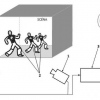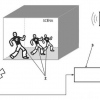Dance as a new musical instrument
Technology description
| The name of the technology: | Dance as a new musical instrument |
|---|---|
| Challenge: | That was the way we once rode a boat on the Adriatic Sea. Tired of just the weather and visiting the pubs, the crew dozed slightly and only at the helm we took turns and who was on duty had to be careful and steer the ship. So at some time we served and watched. The weather was already gentle and there were small ripples all around. Light gusts of wind swayed the ship, and there was a memory of ballet, a classical ballet, where the dancers illustrated the music the composer had made for various reasons. That's when the idea came up. Why do dancers jump, how does one whistle, why does not whistle, how does they want to jump? And it was. After returning, unfortunately to the work process, from ear to ear, this idea was constantly being demonstrated. And it wants to have an educated friend who speaks a computer language and start to realize. The idea is a nice thing, but the path to real is often very laborious and full of pitfalls and bays. However, we stepped on it. |
| Description: |
Objects of interest are scanned in space and, according to their spatial coordinates, pitch, colour and volume are assigned to the tones created. The coordinates of the object are determined on the principle of the machine vision of the camera system. The camera (1) captures a scene of the objects of interest (2) that are different from the surrounding environment. Each individual image is pre-processed so that the image is segmented based on the occurrence of a given colour, which is given by user settings of individual colour coordinates. For each object of interest, its torque characteristics are determined, from which the area of the object of interest in the image and the two spatial coordinates of the centre of gravity are determined. The third spatial coordinate of the centre of gravity of the object is determined if shooting by one camera after the initial calibration according to the size of the area of the object of interest in the image, if shooting by at least two cameras, it is determined on the basis of the superposition of images of different cameras taken at the same time. A graceful dancer moves across the stage, her steps as if creating keyboard tones. Deep on one side, glittering heights on the other. When approaching the viewer, the sound intensifies, runs backwards, and everything is silent. It goes up and its elastic body sounds like a violin, and when it curls up, the organ sounds. Mathematically, it is clear, one coordinate, such as x, that is the pitch of the tone, the other the coordinate of y, it will be the volume and the third z, the color of the sound or instrument. Of course, the representation of individual axes can be chosen according to immediate needs. Well, the tone begins and ends. The dancer may have a glove when the palm opens, the tone begins, and by clenching the palm into a fist the tone ends, perhaps. So we want the machine to find out the position of the dancer or part of it in space and generate the pitch (frequency), volume (volume level) and tone color (higher harmonic, instrument type) based on the three coordinates found. According to another feature, hand open or closed a character facing or back and so on, the tone can be sent to an amplifier and speaker to the world around. The dancer creates a sound with her movements on the stage. And what if there are more dancers? Nothing happens, sounds can be generated by everyone, it will sound very modern, it is a matter of choreography performance. All this must be handled by the appropriate camera computer. It's called machine vision. You can also use several computers where everyone will watch something different, but that's a variation on the same subject. Perhaps it will be an enrichment of the performance, perhaps not, again, it depends on the invention and intelligence of the users of the above system. |
| Commercial opportunity: | With a synergy of artistic imagination and current scientific and technological knowledge, we have devised and built a device that creates sound according to the movement of dancers or other objects in space. Is it a new musical instrument? We do not know and we do not care if it is useful and interesting for people, this idea has fulfilled its goal, however we call it. |
| IP protection status: | Granted patent of the Czech Republic No. 309241 |
| Development status: |
Phase 3Corresponds with TRL 5 and TRL 6 Technology validation and implementing it in real environment. Testing the technology outside of the laboratory and its adjustment to external conditions.
|
| Partnering strategy: | Collaboration licensing |
| More information: |
https://isdv.upv.cz/doc/FullFiles/Patents/FullDocuments/309/309241.pdf https://www.hudebnirozhledy.cz/2020/10/29/je-mozne-v-soucasne-dobe-vymyslet-novy-hudebni-nastroj-vojtech-kresalek-milan-navratil/ |
| Images: | |
| Categories: | Sports & Recreational activities Software |
| Institution: | Tomas Bata University in Zlín |
| Owner of a technology: | Univerzita Tomáše Bati ve Zlíně |


